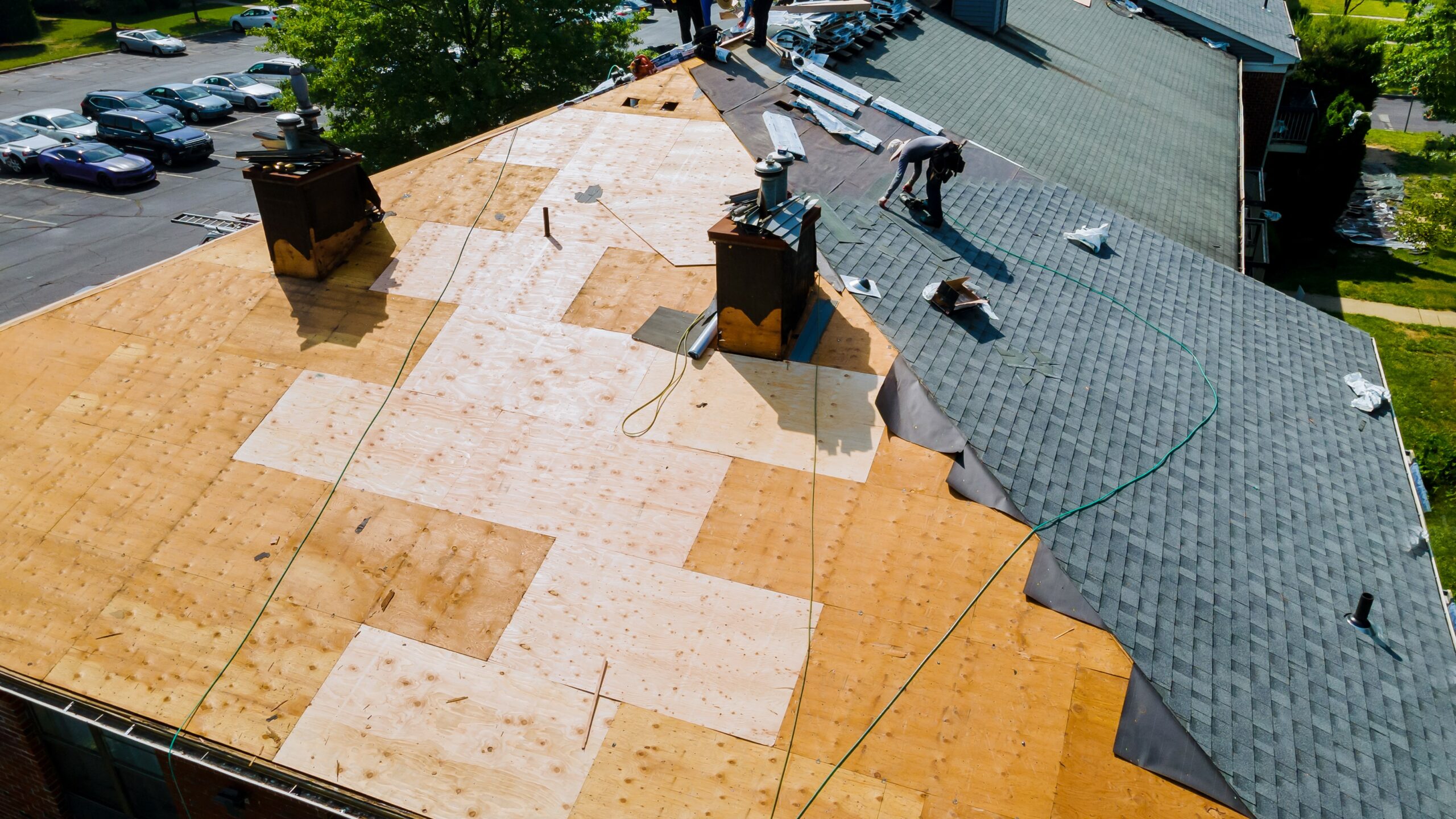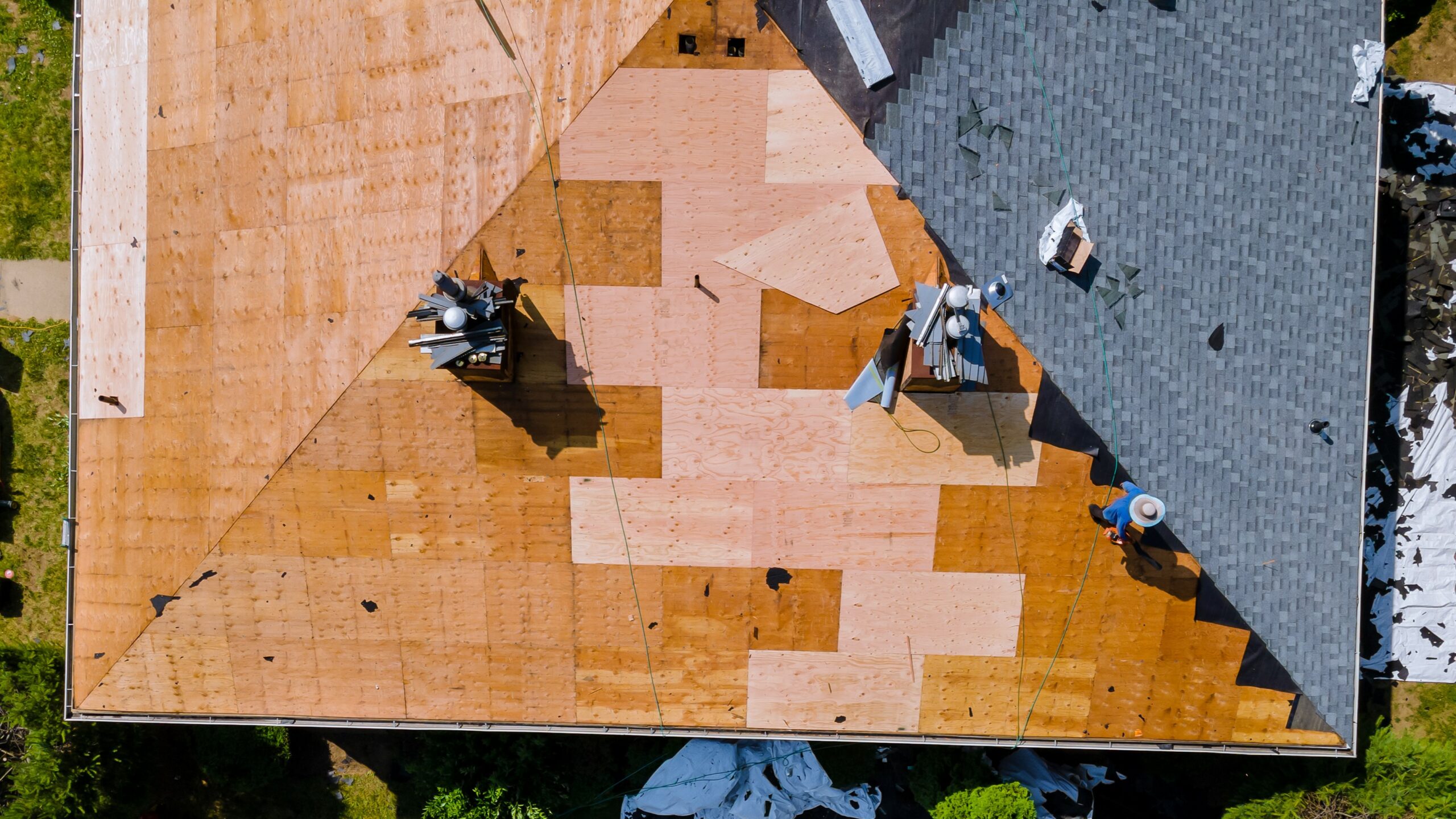Your whole house relies on its roof to protect it from the elements, and if it fails will lead to unnecessary costs for other parts of the house that could have been prevented. Roof decking is the most important part of your roof's structure and is essential in various factors. There are several types, and knowing the different types and how to replace them is good.
Roof decking is a flat surface designed to support the weight of your tiles or shingles. Decking material includes plywood, strand board (OSB), wood planks, tongue-&-groove boards, or metal. Sheet and plank decking are the two most used types and are pressure-treated for maximum strength.
It's crucial to hire a professional to fix your roof if you notice any deterioration or damage. Roof decking is fundamental to your roof's integrity. Repairing or replacing it can be expensive, but familiarizing yourself with its inner workings may save you time and money.
What is Roof Decking?
When a roof must be replaced or fixed, we must know the different roof components and their functions. A roof has three basic components: trusses, decking, and shingles. This article has everything you need to know about decking and how, why, and when to replace it.
Roof decking is made from hardwood boards or planks placed on trusses to create a layer of strength and isolation onto which roof shingles are fastened. It must be strong and high-quality to protect your house from harsh weather conditions.
Decking provides a strong, solid, and stable foundation for your roof's structure, evenly distributing the roof's weight. Your roof needs a rigid platform to support the structure while carrying the weight of the shingles to prevent it from collapsing or sagging. Rain, snow, and hale place much weight on the roof structure, and decking protects your house against wind and moisture from entering.
We often forget the importance of proper insulation, including the role that decking can play in keeping our homes comfortable throughout the year. In isolation, decking is essential; if installed correctly, it may reduce your electricity costs by thousands of dollars. Regarding installation, decking is a cost-effective choice and one of the cheapest, fastest, and most effective options when replacing your roof.
Roof decking offers various benefits, including materials to suit your needs and preferences. Here are a few materials that you may want to consider:
We often fail to appreciate the value of decking and its vital role in our roof's durability, longevity, and structural integrity.

Types of Roof Decking
When you replace or repair your roof, you can choose between two types of decking. There are other types of decking, but the most familiar and popular options are sheet decking and plank decking.
If you replace an older home, you will likely find it has plank decking, the most used option before plywood was invented. Plank decking is still popular because many believe it is much stronger, especially the pressure-treated wood. The wood planks are cut in either 1x8s or 1x6s and nailed to the roof trusses horizontally against each other.
The second option is sheet decking, and in recent years, it has dominated the market because of its low cost and how fast it is installed. The sheets are made from either plywood or OSB, which are wood chips or strips compressed together and then cut into large sheets.
When you replace your roof with plank or sheet decking, you can always opt to change to the other option, and you do not have to stick to the previously installed choice. If your current roof has plank decking, you may not have to replace all the planks. Sometimes, just a few are rotten or need replacing, which can save you from redoing the whole roof. (Related: 13 Details to Cover on Your Roof Replacement Estimate Before Making a Deposit)
The Purpose of a Roof Deck
Roof decking is the part of your roof that holds everything together, and it is the component that provides the strength, durability, and base where the roof shingles are fastened. Your roof is shaped with roof trusses, which must be designed to angle water to prevent leakage, but it needs a base to keep the structure together and isolated.
Decking prevents the roof from moving while isolating the inside from the outside, keeping the elements from entering your home. Decking does not keep the water out, and shingles are fastened on top of it to give you that finished look and protect it from the elements.
Your roof's structural integrity relies on the decking; the base holds all the other components like gutters, etc. Other than functioning as the base for shingles, it also prevents your roof from sagging and strengthens the whole structure of the house.

How do I know if my roof deck needs replacing?
You may face a high cost if you need to replace your roof. Determining whether you need a repair or a full replacement is crucial. Many factors indicate that your roof must be replaced, and here are the signs to look out for:
Does a new roof mean new decking?
Sometimes, you will see that your shingles or tiles show signs of damage, and you must attend to it before it causes more damage. Roof decking is expensive to replace, and you do not have to if it is in good condition. If your tiles or shingles need to be replaced, the decking underneath could still be good, and you only need to replace segments, which will save you a lot of money.
If you decide to keep the old decking when you replace the tiles, you must inspect it properly to ensure it is still reliable. If you have some damaged portions, they must be replaced, and it may be better to replace all the decking while you are busy with your roof. If you are sure that only some are damaged and the rest are reliable, you can only replace the damaged ones.
You must get an expert to assess your roof for damage and whether you must replace the whole roof or just the bad sections.
Final Thoughts
Your roof keeps you dry and safe from the elements; you must attend to it when it shows signs of damage. Roof decking holds your roof together, and when it is in bad condition will cause the roof structure to collapse and may lead to serious loss. There are various factors to consider, like types and quality, and you must inform yourself about its components and function.

